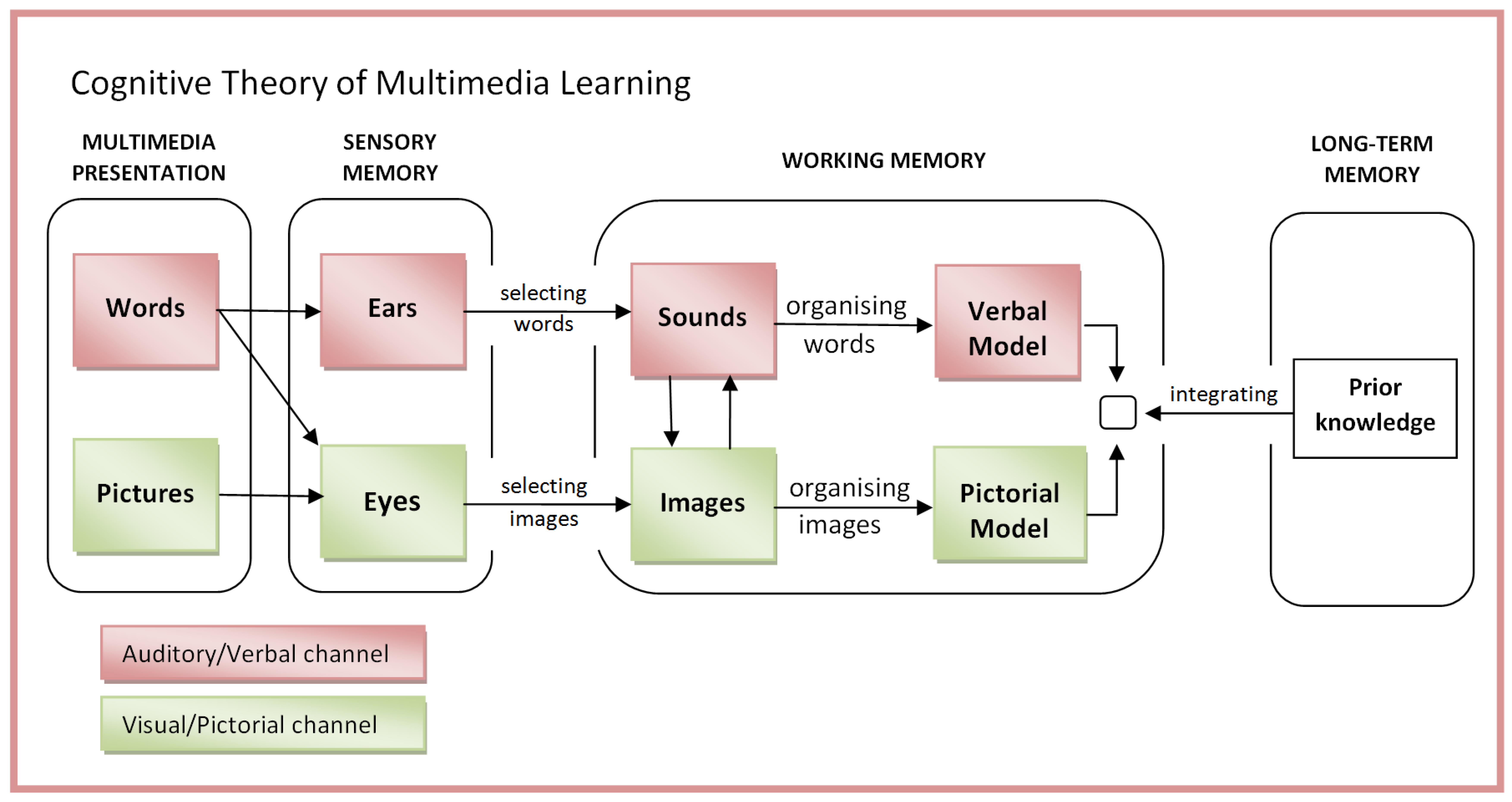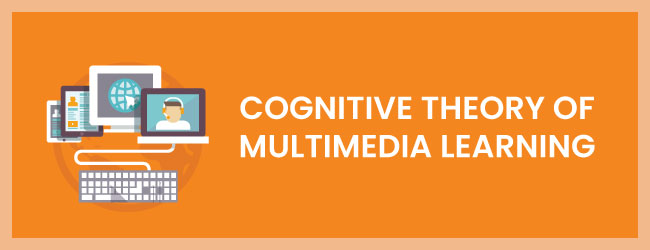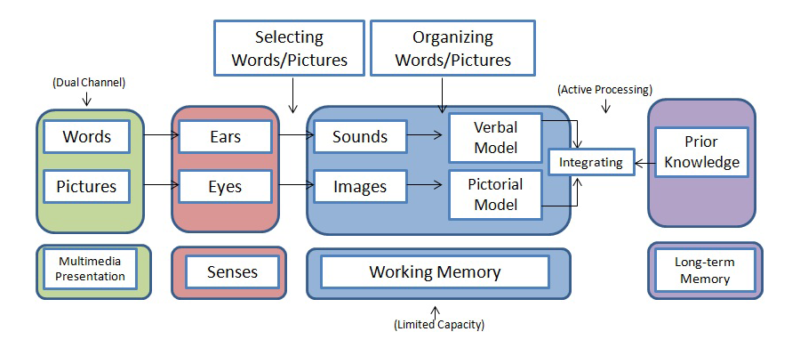a cognitive theory of multimedia learning implications for design principles Delays and difficulties in learning are seen when cognitive processes are not working regularly. A summary of these twelve principles illustrates the design considerations for maximal learning and transfer of knowledge in students.
A Cognitive Theory Of Multimedia Learning Implications For Design Principles, Cognitive load theory has been one of the theories used to integrate our knowledge of human cognitive structures and instructional design principles. Cognitive Theory of Multimedia Learning. Building upon the cognitive theory of multimedias personalization principle which asserts that students learn better from spoken words and pictures than from words alone the CTML and its supporting principles promotes a design structure for listening comprehension.
 Multimedia Learning Office Of Curriculum Assessment And Teaching Transformation University At Buffalo From buffalo.edu
Multimedia Learning Office Of Curriculum Assessment And Teaching Transformation University At Buffalo From buffalo.edu
Review of A Cognitive Theory of Multimedia Learning. A Cognitive Theory of Multimedia Learning. A summary of these twelve principles illustrates the design considerations for maximal learning and transfer of knowledge in students. Cognitive load theory has been one of the theories used to integrate our knowledge of human cognitive structures and instructional design principles. Show full abstract designing multimedia lessons are based on both the cognitive theory of multimedia learning and Mayers principles of multimedia learning.
Delays and difficulties in learning are seen when cognitive processes are not working regularly.
The purpose of the present study is to contribute to multimedia learning theory by clarifying and testing two cognitive principles. Cognitive load theory has been one of the theories used to integrate our knowledge of human cognitive structures and instructional design principles. Multimedia learning is a cognitive theory of learning which has been. Instructional design of multimedia is still mostly based on the intuitive beliefs of designers rather than on empirical evidence Park Hannafin 1994. Mayer and Roxana Moreno booktitleCHI 1998 year1998 R.
Another Article :

Implications of cognitive load theory for multimedia learning. However simply adding words to pictures is not an effective way to achieve multimedia learning. Implications for Design Principles Richard E. Cognitive Theory of Multimedia Learning Instructional Design Principles and Students with Learning Disabilities in Computer-based and Online Learning Environments - Dinana L. This theory originated in Various instructional design principles from CTML were the 1980s by Sweller and developed by others in the 1990s con- entailed and initially validated with typically developing students tinues to influence research into cognitive processes and instruc- using paper-based texts and diagrams and oral or recorded audio tional design Clark. Cognitive Theory of Multimedia Learning. Pdf Cognitive Principles Of Multimedia Learning The Role Of Modality And Contiguity.

A review of five empirically supported design principles based on these theories redundancy effect modality effect. Implications of cognitive load theory for multimedia learning. The human information processing system includes dual channels for visualpictorial and auditoryverbal processing ie dual-channels assumption. A learner-centered approach to multimedia explanations. However simply adding words to pictures is not an effective way to achieve multimedia learning. Each channel has limited capacity for processing ie limited capacity assumption. Mayer S 2001 2008 Multimedia Learning Design Principles Download Table.

A summary of these twelve principles illustrates the design considerations for maximal learning and transfer of knowledge in students. Building upon the cognitive theory of multimedias personalization principle which asserts that students learn better from spoken words and pictures than from words alone the CTML and its supporting principles promotes a design structure for listening comprehension. Implications for Design Principles authorRichard E. Implications for Design Principles inproceedingsMayer1998ACT titleA Cognitive Theory of Multimedia Learning. Delays and difficulties in learning are seen when cognitive processes are not working regularly. Multimedia learning is a cognitive theory of learning which has been. Pdf A Cognitive Theory Of Multimedia Learning Implications For Design Principles.

However simply adding words to pictures is not an effective way to achieve multimedia learning. Delays and difficulties in learning are seen when cognitive processes are not working regularly. Struggling learners and students with Learning Disabilities often exhibit unique cognitive processing and working memory characteristics that may not align with instructional design. Implications for Design Principles authorRichard E. The human information processing system includes dual channels for visualpictorial and auditoryverbal processing ie dual-channels assumption. Cognitive Theory of Multimedia Learning Instructional Design Principles and Students with Learning Disabilities in Computer-based and Online Learning Environments - Dinana L. Education Sciences Free Full Text The Dual Coding And Multimedia Learning Theories Film Subtitles As A Vocabulary Teaching Tool Html.

Review of A Cognitive Theory of Multimedia Learning. However simply adding words to pictures is not an effective way to achieve multimedia learning. In this work Mayer and Moreno ask the question how can we avoid a trail of broken promises concerning the educational benefits of new educational technologies such as multimedia learning environments. Multimedia learning 1 A Cognitive Theory of Multimedia Learning. A learner-centered approach to multimedia explanations. Cognitive Learning Theory Cognitive learning theory explains how internal and external factors influence an individuals mental processes to supplement learning. Applying Richard Mayer S Cognitive Theory Of Multimedia Learning.

Cognitive Learning Theory Cognitive learning theory explains how internal and external factors influence an individuals mental processes to supplement learning. Struggling learners and students with Learning Disabilities often exhibit unique cognitive processing and working memory characteristics that may not align with instructional design. The goal is to instructional media in the light of how human mind works. Intended for healthcare professionals. Mayers 2001 twelve principles for the application of the effects of multimedia learning theory are primarily based on the concepts of coherence spatial contiguity and redundancy. Cognitive Theory of Multimedia Learning Instructional Design Principles and Students with Learning Disabilities in Computer-Based and Online Learning Environments. Pdf Applying The Science Of Learning Evidence Based Principles For The Design Of Multimedia Instruction.

A review of five empirically supported design principles based on these theories redundancy effect modality effect. Cognitive Theory of Multimedia Learning Instructional Design Principles and Students with Learning Disabilities in Computer-Based and Online Learning Environments. Cognitive Theory of Multimedia Learning. Review of A Cognitive Theory of Multimedia Learning. Intended for healthcare professionals. However simply adding words to pictures is not an effective way to achieve multimedia learning. Illustration Of The Theory Stack That Supports Multimedia Learning Download Scientific Diagram.

Cognitive Theory of Multimedia Learning Mayer The principle known as the multimedia principle states that people learn more deeply from words and pictures than from words alone Mayer p. However simply adding words to pictures is not an effective way to achieve multimedia learning. The goal is to instructional media in the light of how human mind works. Instructional design of multimedia is still mostly based on the intuitive beliefs of designers rather than on empirical evidence Park Hannafin 1994. Cognitive Theory of Multimedia Learning. Show full abstract designing multimedia lessons are based on both the cognitive theory of multimedia learning and Mayers principles of multimedia learning. Pdf Cognitive Theory Of Multimedia Learning Instructional Design Principles And Students With Learning Disabilities In Computer Based And Online Learning Environments.

A learner-centered approach to multimedia explanations. Implications for Design Principles Richard E. Learning and Instruction4 295-312. This theory originated in Various instructional design principles from CTML were the 1980s by Sweller and developed by others in the 1990s con- entailed and initially validated with typically developing students tinues to influence research into cognitive processes and instruc- using paper-based texts and diagrams and oral or recorded audio tional design Clark. Cognitive Theory of Multimedia Learning Mayer The principle known as the multimedia principle states that people learn more deeply from words and pictures than from words alone p. Show full abstract designing multimedia lessons are based on both the cognitive theory of multimedia learning and Mayers principles of multimedia learning. Pdf Cognitive Theory Of Multimedia Learning Instructional Design Principles And Students With Learning Disabilities In Computer Based And Online Learning Environments.

Implications of cognitive load theory for multimedia learning. However simply adding words to pictures is not an effective way to achieve multimedia learning. Mayer and Roxana Moreno. Implications for Design Principles authorRichard E. Learning and Instruction4 295-312. Mayer and Roxana Moreno booktitleCHI 1998 year1998 R. Cognitive Theory Of Multimedia Learning Litfl Smile2 Ccc.
The contiguity principle and the modality principle. Cognitive load theory has been one of the theories used to integrate our knowledge of human cognitive structures and instructional design principles. Delays and difficulties in learning are seen when cognitive processes are not working regularly. Intended for healthcare professionals. Implications for Design Principles by Richard E. Multimedia learning is a cognitive theory of learning which has been. 2.

A summary of these twelve principles illustrates the design considerations for maximal learning and transfer of knowledge in students. In this work Mayer and Moreno ask the question how can we avoid a trail of broken promises concerning the educational benefits of new educational technologies such as multimedia learning environments. Mayer and Roxana Moreno University of California Santa Barbara Research on educational technologies–ranging from motion pictures to computer-based. A review of five empirically supported design principles based on these theories redundancy effect modality effect. Building upon the cognitive theory of multimedias personalization principle which asserts that students learn better from spoken words and pictures than from words alone the CTML and its supporting principles promotes a design structure for listening comprehension. Mayer and Roxana Moreno booktitleCHI 1998 year1998 R. Pdf Applying The Cognitive Theory Of Multimedia Learning To The Design Of Printed Learning Materials.

Review of A Cognitive Theory of Multimedia Learning. Cognitive Learning Theory Cognitive learning theory explains how internal and external factors influence an individuals mental processes to supplement learning. Building upon the cognitive theory of multimedias personalization principle which asserts that students learn better from spoken words and pictures than from words alone the CTML and its supporting principles promotes a design structure for listening comprehension. However simply adding words to pictures is not an effective way to achieve multimedia learning. Mayers 2001 twelve principles for the application of the effects of multimedia learning theory are primarily based on the concepts of coherence spatial contiguity and redundancy. A summary of these twelve principles illustrates the design considerations for maximal learning and transfer of knowledge in students. Applying Richard Mayer S Cognitive Theory Of Multimedia Learning.

Implications of cognitive load theory on the design of learning. Cognitive Theory of Multimedia Learning Instructional Design Principles and Students with Learning Disabilities in Computer-Based and Online Learning Environments. Derivinginstructional design principles from cognitive theory. However simply adding words to pictures is not an effective way to achieve multimedia learning. This theory originated in Various instructional design principles from CTML were the 1980s by Sweller and developed by others in the 1990s con- entailed and initially validated with typically developing students tinues to influence research into cognitive processes and instruc- using paper-based texts and diagrams and oral or recorded audio tional design Clark. Review of A Cognitive Theory of Multimedia Learning. Applying The Science Of Learning To Medical Education Mayer 2010 Medical Education Wiley Online Library.

Implications for Design Principles Richard E. The human information processing system includes dual channels for visualpictorial and auditoryverbal processing ie dual-channels assumption. Review of A Cognitive Theory of Multimedia Learning. Implications for Design Principles Richard E. A review of five empirically supported design principles based on these theories redundancy effect modality effect. The cognitive theory of multimedia learning CTML is based on three cognitive science principles of learning. Mayer S Cognitive Theory Of Multimedia Learning E Lessons And Human Learning European Heart Association.











